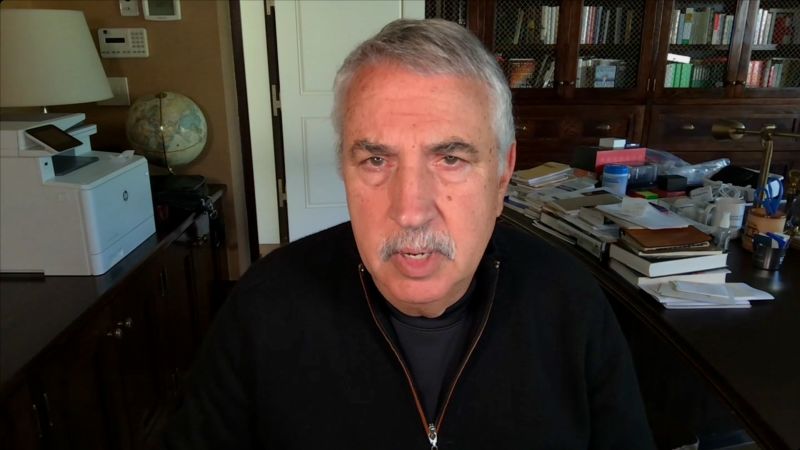Friedman emphasizes the need for a two-state solution as the only viable path towards peace in Israel. He argues that this solution would involve creating separate states for the Jewish and Palestinian populations within the region. He stresses that this approach is essential for ending the ongoing conflict between Israel and Hamas. Friedman believes that those who do not support this solution or who only condemn one side of the conflict are not acting in a morally serious manner.
Friedman’s assertion is based on the idea of creating two states for two indigenous peoples in the region. This approach acknowledges the historical and cultural ties of both the Jewish and Palestinian populations to the land between the Jordan River and the Mediterranean. By recognizing both groups as indigenous to the area, Friedman promotes the idea of equal rights and self-determination for both populations. This approach seeks to address the long-standing grievances of both groups and to establish a sustainable solution to the conflict.
The concept of two states for two indigenous peoples has gained traction in recent years as a potential framework for resolving the Israel-Hamas conflict. This approach has garnered support from various international actors and organizations who see it as a viable path towards peace in the region. By advocating for this solution, Friedman aligns himself with a growing consensus on the need for a two-state solution as the most effective way to address the root causes of the conflict and to promote stability and security for both Israelis and Palestinians.
Friedman’s call for a two-state solution is also motivated by a desire to end the violence and achieve the release of hostages held by Hamas. He sees the establishment of separate states for each population as a means to address the underlying causes of the conflict and to prevent further bloodshed. By advocating for a two-state solution, Friedman aims to promote reconciliation and mutual understanding between Israelis and Palestinians, and to create a framework for peaceful coexistence in the region.
Friedman’s stance on the Israel-Hamas conflict reflects a broader conversation within the international community about the need for a two-state solution. This approach is seen as a way to address the historical grievances and aspirations of both populations and to establish a lasting peace in the region. By emphasizing the importance of recognizing the rights and identities of both Israelis and Palestinians, Friedman advocates for a more inclusive and equitable resolution to the conflict. He believes that only by acknowledging the legitimacy of both sides can a sustainable and just peace be achieved.
In conclusion, Friedman’s call for a two-state solution as the only viable path towards peace in Israel reflects a growing consensus within the international community on the need for a comprehensive and inclusive approach to the conflict. By advocating for a framework that recognizes the rights and identities of both Israelis and Palestinians, Friedman aims to address the root causes of the conflict and to promote reconciliation and mutual understanding between the two populations. His stance emphasizes the importance of ending the violence, achieving the release of hostages, and creating a sustainable solution to the conflict. Ultimately, Friedman sees the establishment of two states for two indigenous peoples as the most effective way to ensure a peaceful and stable future for both Israelis and Palestinians in the region.


